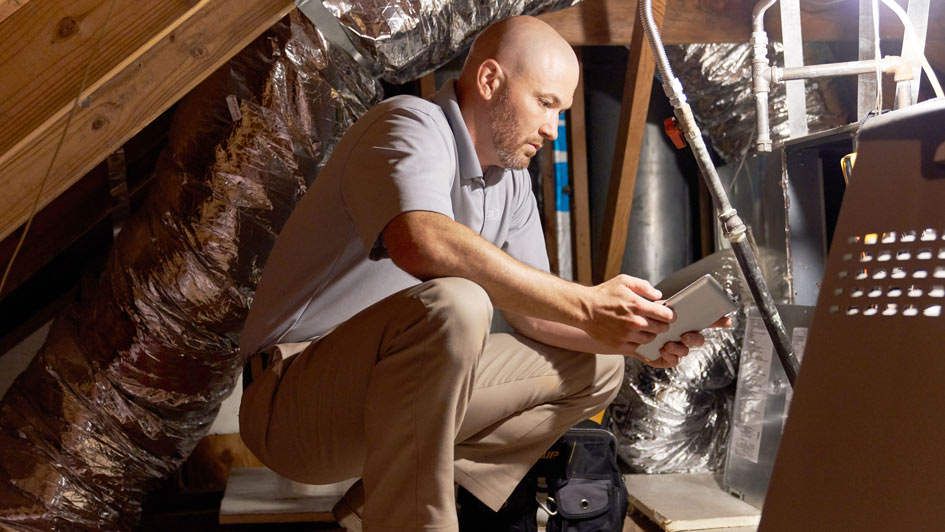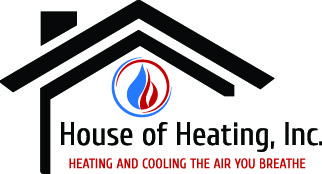
Where you aware that more than one-half of your home’s energy costs are for your heating and cooling? That’s why it’s essential to secure an energy-efficient HVAC system.
Furnace efficiency standards were last revised to an Annual Fuel Utilization Efficiency (AFUE) rating of 80% in 2015. This rating system calculates how effective your furnace is at natural gas into heat. An AFUE rating of 80% means your furnace will waste about 20% of the fuel it uses while creating heat.
In 2022, the U.S. government devised new energy-efficiency standards for residential gas furnaces that would significantly lower emissions, save customers money and stimulate sustainability.
This proposal is projected to:
- Save Americans $1.9 billion annually.
- Reduce carbon emissions by 373 million metric tons and methane emissions by 5.1 million tons over the next 25 - 30 years, the equivalent of what 61 million homes emit annually.
Starting in 2029, the proposed rule would require all new gas furnaces to feature AFUE ratings of 95%. This means furnaces would combust nearly 100% of the gas into usable heat.
With these facts in mind, you may be asking yourself "what happens to my existing furnace"? Currently, not much, as the proposed rule will not go into effect until 2029 at the earliest and doesn’t affect furnaces that are already in use.
But if you are considering furnace replacement in soon, highly energy-efficient furnaces are now available. Find out how these furnaces can help you save on energy bills now.
Guide to Condensing Furnaces
How Condensing Furnaces Work
A condensing furnace is a kind of heating system that uses a secondary heat exchanger to collect wasted heat from the furnace's exhaust gases. This decreases the extent of energy wasted, improves energy efficiency and lowers CO2 emissions. It also will take less natural gas to produce the same rate of heat in comparison to other types of furnaces.
How Condensing Furnaces Differ from Non-Condensing Furnaces
The primary difference between a condensing furnace and a non-condensing furnace is that the former uses a secondary heat exchanger to collect any wasted heat from its exhaust gases, while the latter does not.
Equipment Lifespan
The life span of a condensing furnace will depend on the brand, model and other factors. Usually, a condensing furnace will last between 10-20 years with sufficient maintenance and regular service. If your heating system doesn’t have regular furnace maintenance, the unit may have a significantly shorter life span.
Why Condensing Furnaces Cost More
For the most part, condensing furnaces are more cost most to install than non-condensing furnaces. This is on account of their increased efficiency and the added components needed to capture any wasted heat from its exhaust gases. However, the added energy savings can often recoup the price of purchase. So in the long run, it may be worthwhile investing in a condensing furnace.
Guide to Variable-Speed Furnaces
Variable-Speed Furnaces: What They Are and How They Work
A variable-speed furnace can vary its fan speed based on the heating preferences of your home. It operates at a slower speed until it detects a drop in temperature and then speeds up to supply more heat. This [precise fan is a lot more efficient than standard, single-speed furnaces, as it only utilizes the minimum amount of energy needed to heat your home, which subsequently saves money on your utility bills.
Many variable-speed furnaces are condensing furnaces, although some are available in non-condensing models with lower AFUE ratings. In order for a furnace to be classified as a condensing furnace, it must offer an AFUE rating of 90% or higher.
Do Variable-Speed Furnaces Run Constantly?
A variable-speed furnace doesn’t operate all the time. Instead, it runs at different speeds according to the temperature in your Marshfield home as well as the amount of energy it requires to sustain that temperature.
When sufficient energy is necessary to maintain your preferred temperature level, the furnace will shift to a higher speed in order to keep up with demand. This allows for more efficient heating in your home while also offering quieter operation.
Guide to Two-Stage Furnaces
Two-Stage Furnaces: What They Are and How They Work
A heating system with two settings of operating - high and low - is called a two-stage furnace. When set to the low stage, the furnace runs at a reduced capacity to help maintain the preferred temperature in your home more efficiently. During the high stage, the furnace will instead function at peak capacity to satisfy demands for greater heat. With a two-stage furnace, you can enjoy greater energy efficiency and stable temperatures everywhere in your home.
While two-stage furnaces are very efficient, not all all types are condensing furnaces.
Does a Two-Stage Furnace Operate All the Time?
A two-stage furnace does not stay on indefinitely. In the low stage of operation, the furnace performs at diminished capacity in order to sustain a planned temperature more efficiently within your home. When a greater demand for energy is needed to reach the set temperature, the unit shifts to its high stage and runs at full capacity. For this reason, two-stage furnaces are able to help reduce energy costs without operating around the clock.
Differences Between Two-Stage and Variable-Speed Furnaces
Two-stage furnaces have two stages of functionality, low and high. During the low stage, the furnace performs at reduced capacity to help uphold a desired temperature within your home. When additional warmth or cooling is necessary, the furnace will change over to its high stage and operate at full capacity.
Variable-speed furnaces, meanwhile, can operate at a variety of speeds in order to sustain a desired temperature more consistently at home. As such, variable-speed furnaces offer greater savings on your utility bills .
Differences Between One- and Two-Stage Furnaces
One-stage furnaces have a single stage motor and operate either at full capacity or not at all. In other words, the furnace is always running in order to maintain a desired comfort level within your home.
Two-stage furnaces, by comparison, have two stages of operation, low and high. While in the low stage, the furnace runs at reduced capacity in order to maintain the desired temperature more efficiently. When a greater demand for warmth or cooling is needed, the furnace will shift to its high stage and operate at peak capacity.
Make Your Furnace Installation Appointment with House of Heating Incorporated Today
Making sense of modern furnace technology can be confusing. That’s why House of Heating Incorporated professionals are here to help with a no-obligation, no-pressure estimate for furnace installation. We’ll assess your home, your heating requirements and your budget before helping you find the ideal solution. Call us at 715-384-3163 to get started today!
